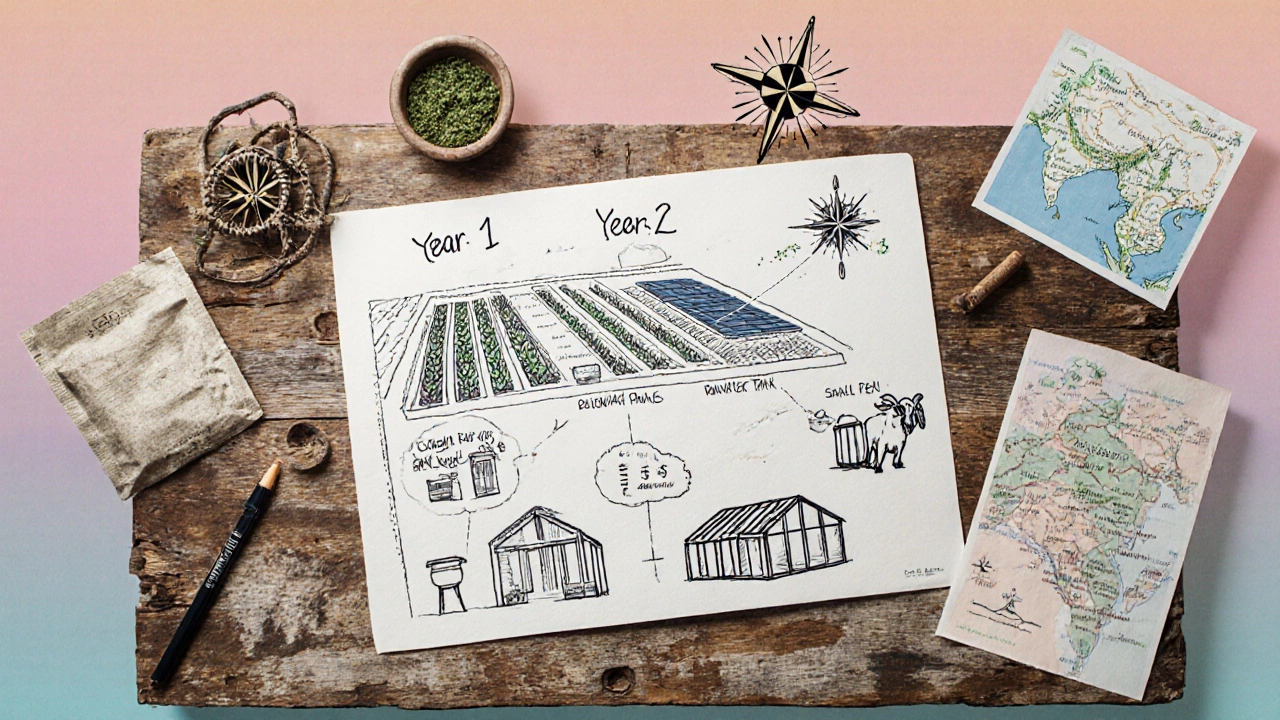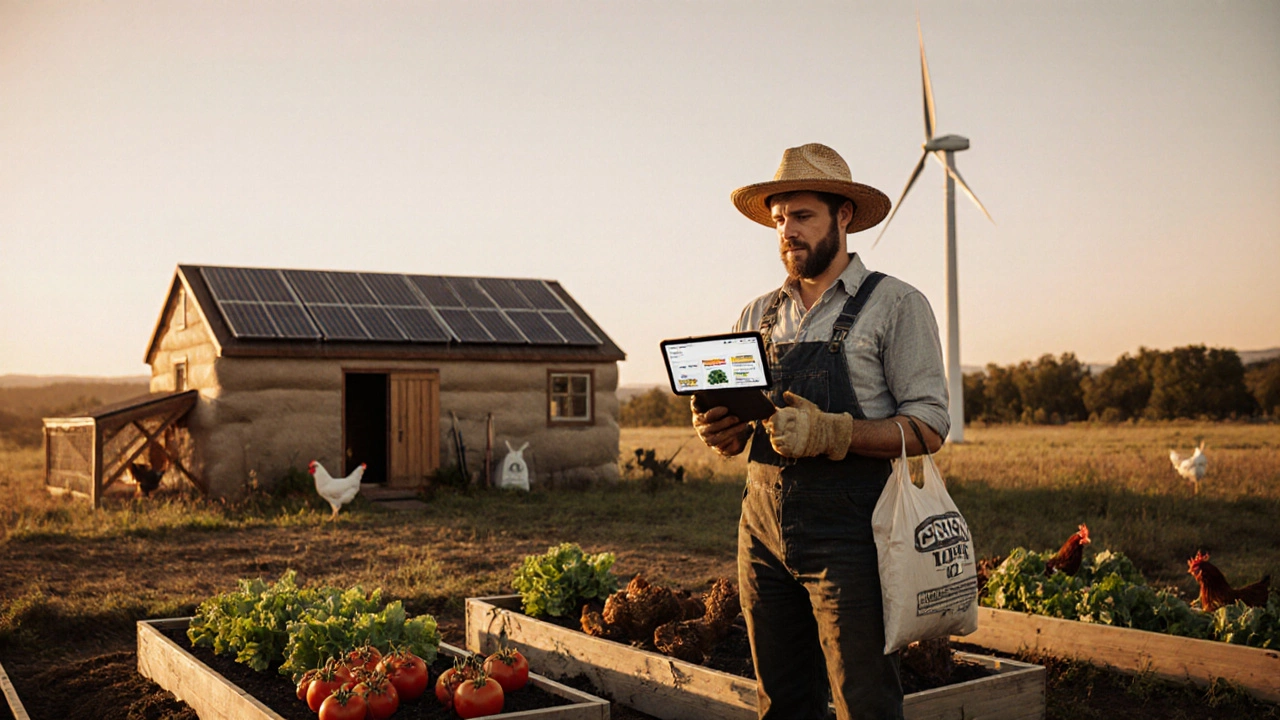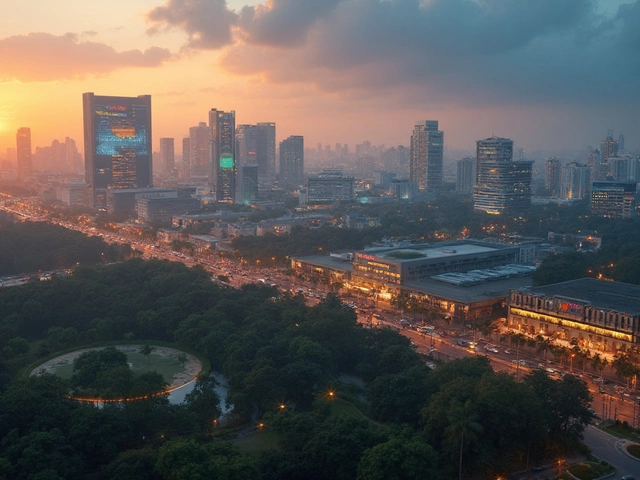Homesteader Land Suitability Calculator
Calculate Your Homesteading Potential
Use this calculator to assess how well your property matches the requirements for a successful modern homestead. Consider factors like land size, soil quality, water access, and zoning.
Property Size
Minimum 5 acres recommended for basic homesteading; 10+ acres provides more flexibility.
Soil Quality
Healthy soil is crucial for food production. Ideal soil has good organic matter content and proper pH.
Water Access
Sufficient water is essential for crops, livestock, and daily use.
Zoning Compliance
Ensure your property allows for homesteading activities like livestock and renewable energy.
Solar Potential
Sun exposure determines your ability to generate renewable energy.
Ever wonder what a homesteader today actually does? It’s not just about planting a garden and living off the land; it’s a blend of sustainability, technology, and smart property choices that lets people create self‑reliant lifestyles in the 21st century.
Defining the Modern Homesteader
Homesteader is a person who intentionally pursues a self‑sufficient lifestyle, often by owning or leasing land, growing food, and generating their own power. Modern homesteaders combine traditional skills with contemporary tools to balance independence and community ties. While the term dates back to early American frontier life, today’s homesteaders live in suburbs, rural towns, or even remote outposts, leveraging everything from solar panels to online marketplaces to support their goals.
Core Values and Lifestyle Choices
At the heart of homesteading are three pillars: sustainability, self‑reliance, and community. Modern practitioners often adopt Homesteading as a holistic approach that includes food production, water management, renewable energy, and ethical animal care.
- Sustainable agriculture: Using crop rotation, compost, and low‑input techniques to keep soil healthy.
- Off‑grid living: Reducing dependence on municipal utilities by installing solar arrays, rainwater tanks, and composting toilets.
- Permaculture: Designing landscapes that mimic natural ecosystems, improving biodiversity and resilience.
These choices are not just hobbyists’ whims; they’re responses to rising living costs, climate concerns, and a desire for food security.
Finding the Right Land
When a homesteader decides to buy, they’re looking for more than just acreage. The ideal parcel supports diverse activities while staying within budget.
- Size and Topography: A minimum of 5‑10 acres gives room for gardens, livestock, and a buffer zone for wildlife. Gentle slopes aid drainage; flat areas simplify building.
- Soil Quality: Conduct a soil test (pH, organic matter, texture). Rich, loamy soils reduce the need for expensive amendments.
- Water Access: Surface water rights, wells, or proximity to streams determine irrigation options and animal husbandry viability.
- Zoning Regulations: Verify that the local council permits agricultural use, accessory dwellings, and livestock. Some regions require a rural property classification.
- Renewable Energy Potential: Assess sun exposure for solar panels and wind flow for turbines.
Platforms like regional land‑for‑sale listings, local council auctions, and farmer‑to‑farmer networks can surface hidden gems that fit these criteria.
Sustainable Practices That Define Homesteading
Once the land is secured, the real work begins. Modern homesteaders use a mix of age‑old knowledge and cutting‑edge tech.
- Food Production: Integrating vegetable gardens with perennial orchards and small livestock (chickens, goats) creates a closed‑loop food system.
- Renewable Energy: Solar PV systems now cost under $1 per watt; adding battery storage smooths out evening demand.
- Water Management: Rainwater harvesting can supply up to 60% of household needs when paired with efficient drip irrigation.
- DIY Building: Many homesteaders erect insulated earth‑bag homes or repurpose shipping containers, reducing construction costs by up to 40%.
These practices not only cut expenses but also lower the environmental footprint, aligning with the broader goal of food security for the household.
Legal and Zoning Considerations
Turning a plot into a functional homestead means navigating a maze of regulations.
- Land Ownership: In Australia, title deeds must be clear of encumbrances. Title searches through state land registries reveal any mortgages or covenants.
- Zoning Regulations: Local councils classify land into zones such as Rural Residential or Agricultural. Each zone defines permissible structures, animal numbers, and business activities.
- Property Registration: After purchase, register the deed within 30 days to secure legal rights and to enable future financing.
- Building Approvals: Even a tiny shed may need a permit. Pre‑approval of a DIY building plan speeds up construction.
Consulting a solicitor or a local land‑use officer early can prevent costly stop‑work orders later on.

Traditional Farmer vs. Modern Homesteader
| Aspect | Traditional Farmer | Modern Homesteader |
|---|---|---|
| Primary Goal | Commercial crop/livestock production for market sale | Self‑sufficiency, sustainable living, limited market sales |
| Land Size | Often hundreds of acres | 5‑50 acres, optimized for diversified use |
| Technology Use | Mechanized equipment, bulk fertilizers | Solar panels, rainwater tanks, low‑input farming |
| Regulatory Focus | Compliance with food safety and export standards | Compliance with zoning, building codes, water rights |
| Community Role | Supplier to regional/agricultural economy | Local food hub, skill‑sharing, micro‑enterprise |
This side‑by‑side view shows that while both groups love the land, their motivations and tools differ sharply.
Common Pitfalls and Pro Tips
Even the most prepared homesteader can stumble. Below are frequent mistakes and how to avoid them.
- Underestimating Start‑up Costs: Initial outlay for tools, livestock, and solar can reach $30,000. Create a detailed budget and keep a 10% contingency.
- Ignoring Soil Tests: Skipping this step leads to poor yields and expensive amendments later.
- Over‑stocking Animals: Start with a small flock; scale up as you master feed, health, and housing.
- Neglecting Community Networks: Join local homesteading groups, online forums, and farmers’ markets to share resources and advice.
Pro tip: Document your experiments in a simple spreadsheet. Tracking yields, energy usage, and expenses gives you data to tweak practices for better efficiency.
Next Steps for Aspiring Homesteaders
If you’re ready to become a homesteader, start with these three actions:
- Research local zoning and land‑use policies in your desired region.
- Visit at least three properties that meet your size and water criteria; take soil samples for testing.
- Sketch a phased development plan-year 1: garden and rainwater; year 2: solar and livestock; year 3: additional structures.
Following a clear roadmap turns the dream of self‑reliance into a realistic, enjoyable project.
What defines a homesteader in 2025?
A homesteader today blends traditional self‑sufficiency practices with modern technology-using solar power, rainwater harvesting, and digital marketplaces while focusing on sustainable living and local community engagement.
How much land is needed to start a homestead?
Most experts recommend at least 5‑10 acres to accommodate a garden, a few animals, and space for future expansion. Larger parcels add flexibility but also increase management complexity.
Can I live off‑grid on a small rural property?
Yes, with the right combination of solar panels, battery storage, and rainwater tanks. A well‑designed off‑grid system can meet most household needs on as little as 2‑3 acres, provided local regulations allow it.
What legal steps must I take after buying land?
Register the deed with the state land registry, check for any covenants, obtain any required building or farming permits, and ensure the land’s zoning aligns with your planned activities such as livestock or home‑based enterprises.
How does permaculture help a homestead?
Permaculture designs the farm as a resilient ecosystem, reducing inputs by mimicking natural cycles. This means less fertilizer, fewer pests, and higher long‑term productivity, which aligns perfectly with the homesteader’s sustainability goals.






